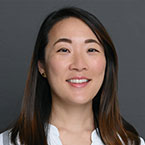By: Sylvia H. Yoo, MD, FAAO, FAAP
Myopia, or nearsightedness, is a common vision problem that often begins between the ages of 6 and 14. It affects an estimated 5% of preschoolers, about 9% of school aged children and 30% of adolescents.
Children are more likely to develop myopia if their parents are nearsighted. However, myopia is on the rise overall, especially in kids. No one is exactly sure why, but experts believe it could be related to more time doing closeup tasks indoors like using
computers and playing
video games.
Here's what you need to know about myopia and your child's vision.
Eye development & vision
What causes myopia?
Myopia happens when your child's eyeball is too long from front to back. It can also develop when the
cornea, the clear window at the front of the eye, is curved too steeply. When light enters your child's eye, the rays fall just short of the
retina, the light-sensitive tissue at the back of the eye. This makes distant objects blurry and close objects clear.
In hyperopia, or farsightedness, distant objects are clearer than near objects. It takes more work to focus on everything, but especially on close-up objects. Children's eyes haven't totally developed yet, so some farsightedness is normal in childhood. Most kids don't experience blurry vision, though, because their eyes automatically focus. As they grow, children usually become less farsighted and may become nearsighted instead.
Myopia generally gets worse through adolescence, then starts to stabilize in the early 20s.
Myopia symptoms in children
Symptoms of myopia include:
Diagnosing myopia
If your child doesn't pass a
vision screening at your pediatrician's office or at school, they may have myopia. To get a diagnosis, your child will need to see an
ophthalmologist or an
optometrist.
Ophthalmologists have a degree in medicine (MD or DO). They do eye exams and prescribe glasses and contact lenses. They also diagnose and treat eye diseases and perform eye surgery.
Optometrists have a degree in optometry (OD). They give eye exams, prescribe glasses and contact lenses, and screen for and treat certain vision problems.
An
optician is trained to make sure glasses that are prescribed by an ophthalmologist or optometrist fit correctly.
Treatment of myopia in childhood
Myopia cannot be reversed or cured, but it can be treated. The goals of treatment are to improve your child's vision and prevent it from getting worse. This is important for protecting their eye health in the future, even if they still need glasses or contact lenses.
Glasses
Glasses for myopia can be used all the time or just when they're needed so your child can see far away. It's important to choose frames that fit well and that work for your child's age and activities. For example, if you have a young child, it may help to buy glasses with a strap, so they stay on more easily. Or if your child plays sports, getting sports goggles will keep their regular glasses from getting broken. An optician can help you figure out what your child may need.
Contact lenses
Contact lenses are an option if your child prefers them. They can be helpful for certain activities too, especially sports. While there's no age limit for contacts, your child should be able to tolerate eye drops well and practice good hygiene. Contacts need to be cared for on a daily basis to prevent eye infections.
It's important to always have glasses for backup, even if your child wears contact lenses most of the time. If your child has eye pain or redness while wearing contact lenses, contact your ophthalmologist or optometrist right away.
Treatments to prevent myopia from getting worse
Researchers are studying ways to prevent myopia from worsening in children. These potential treatments include:
Low-dose atropine eye drops
A low dose of the same type of eye drops that are used to dilate the pupils during an eye exam may help slow down myopia in children between 5 and 18 years old.
Specialized contact lenses
In some children, wearing a specialized
multifocal contact lens that blurs their side vision may help slow their eye growth and limit myopia.
Another type of contact lens treatment called orthokeratology, or Ortho-K, is worn overnight to flatten the
cornea. During the day, the reshaped cornea helps focus light properly on your child's retina to improve blurry vision. The safety of this treatment is a concern because wearing contact lenses while sleeping increases your child's risks of eye irritation and infection. It also increases the risk for more severe vision problems.
More time outside
Spending time outdoors can also help with myopia management. By balancing screen time with
outside time when possible, you may help limit your child's nearsightedness and protect their vision as they grow.
Remember
If you think your child is experiencing symptoms of myopia, talk with your pediatrician. They can give your child a vision screening and help you figure out next steps, if necessary.
More information
About Dr. Yoo
 Sylvia H. Yoo, MD, FAAO, FAAP, is a member of the Executive Committee of the American Academy of Pediatrics Section on Ophthalmology. She is also an Associate Professor of Ophthalmology at Tufts University School of Medicine in Massachusetts and practices pediatric ophthalmology at the New England Eye Center at Tufts Children's Hospital. Sylvia H. Yoo, MD, FAAO, FAAP, is a member of the Executive Committee of the American Academy of Pediatrics Section on Ophthalmology. She is also an Associate Professor of Ophthalmology at Tufts University School of Medicine in Massachusetts and practices pediatric ophthalmology at the New England Eye Center at Tufts Children's Hospital.
|